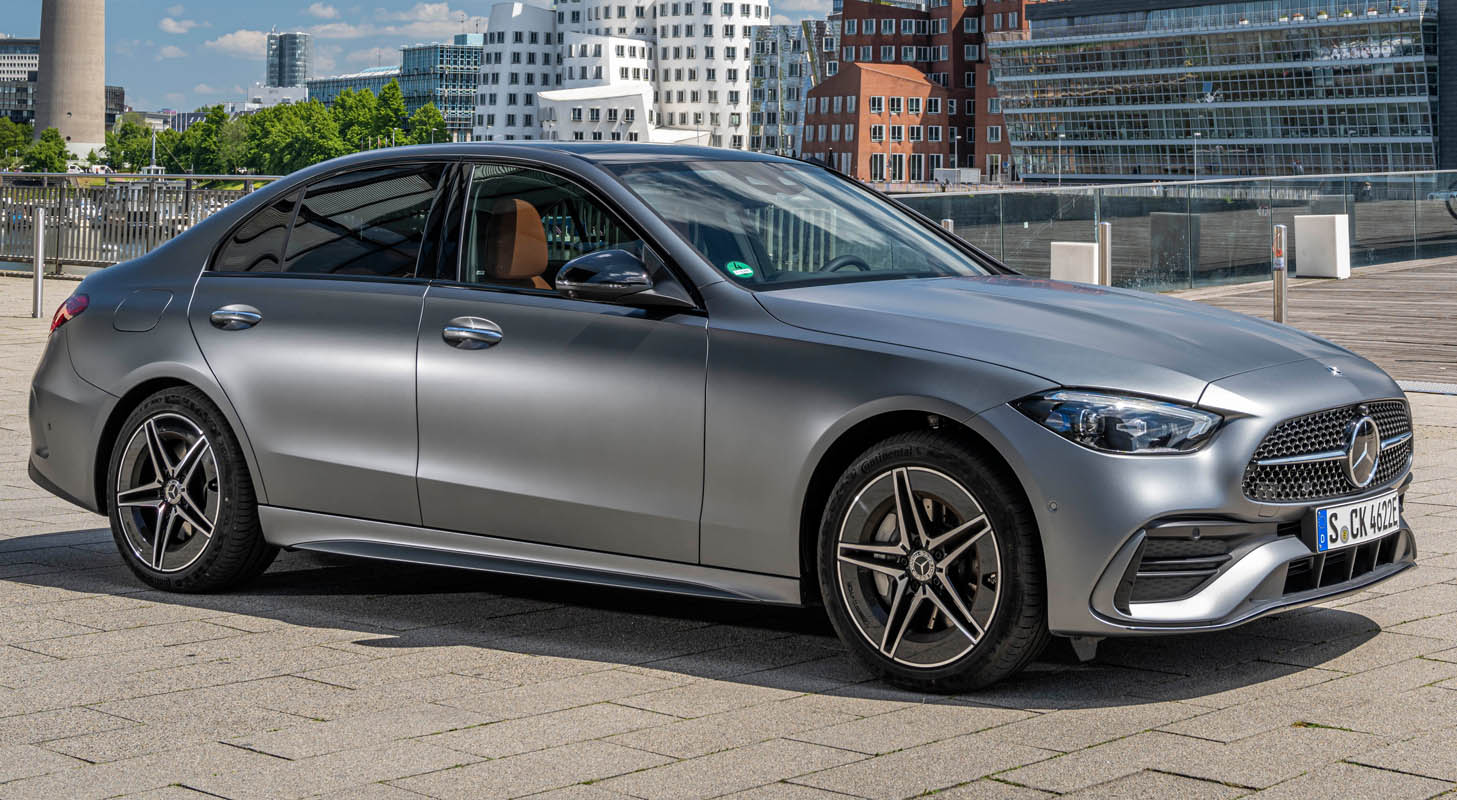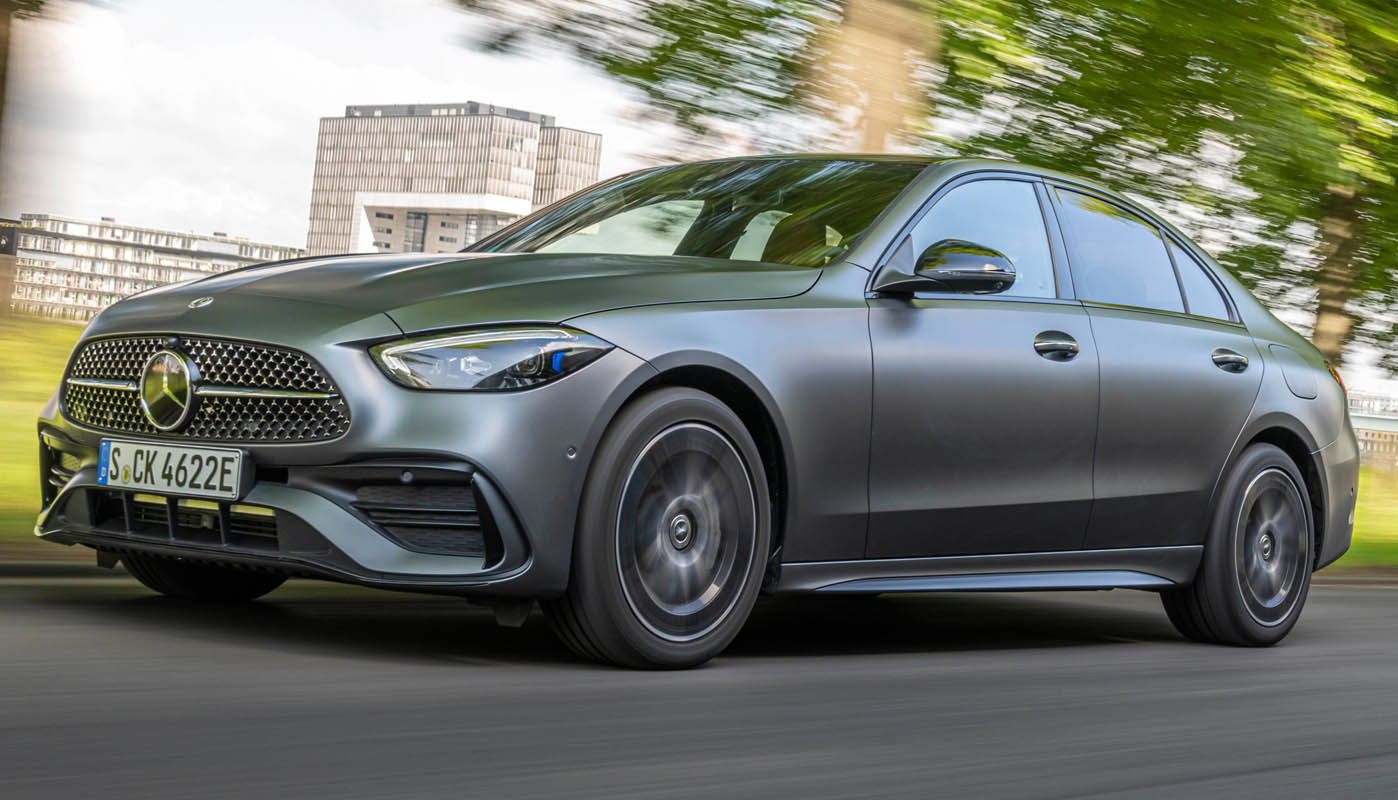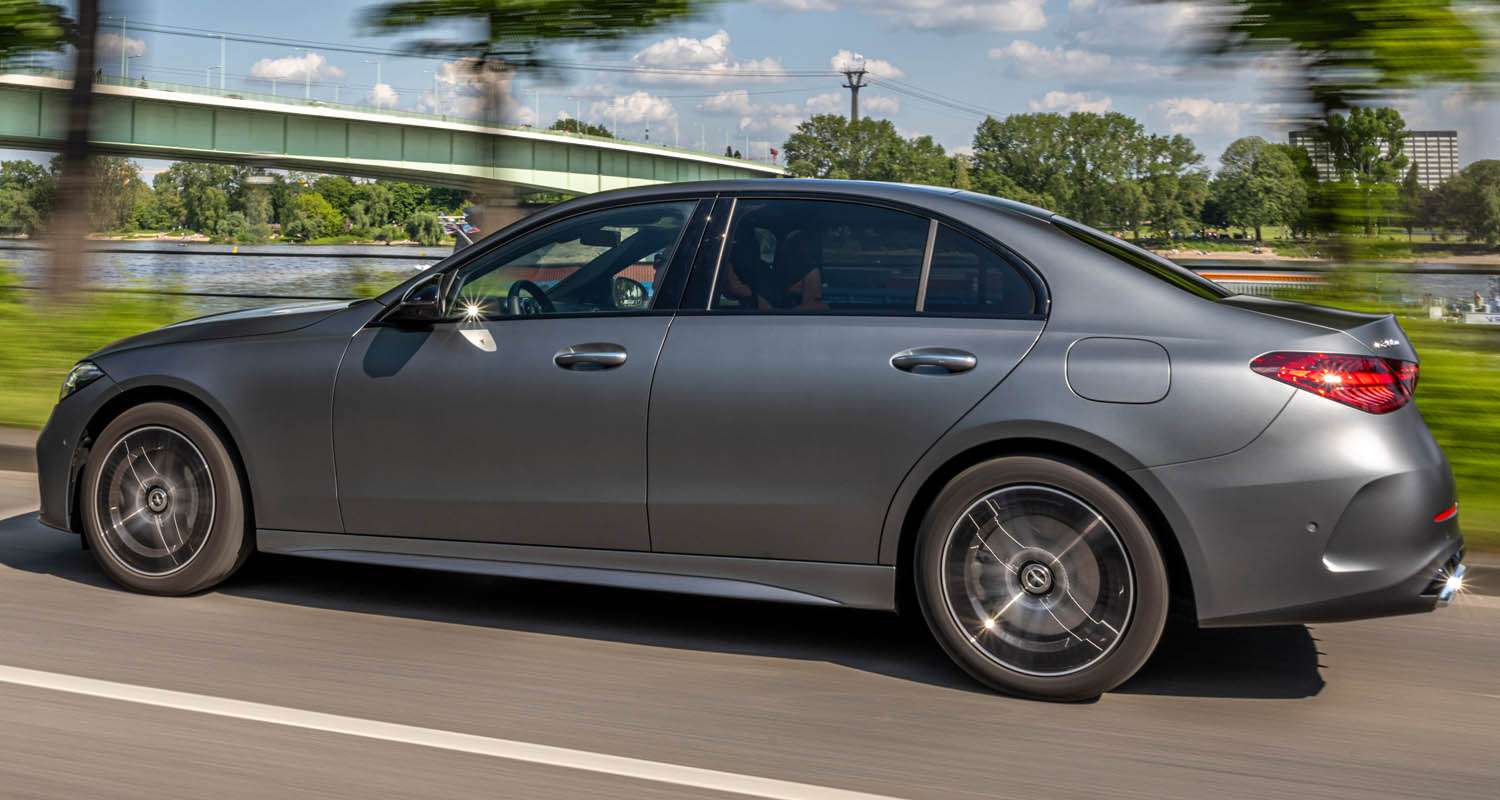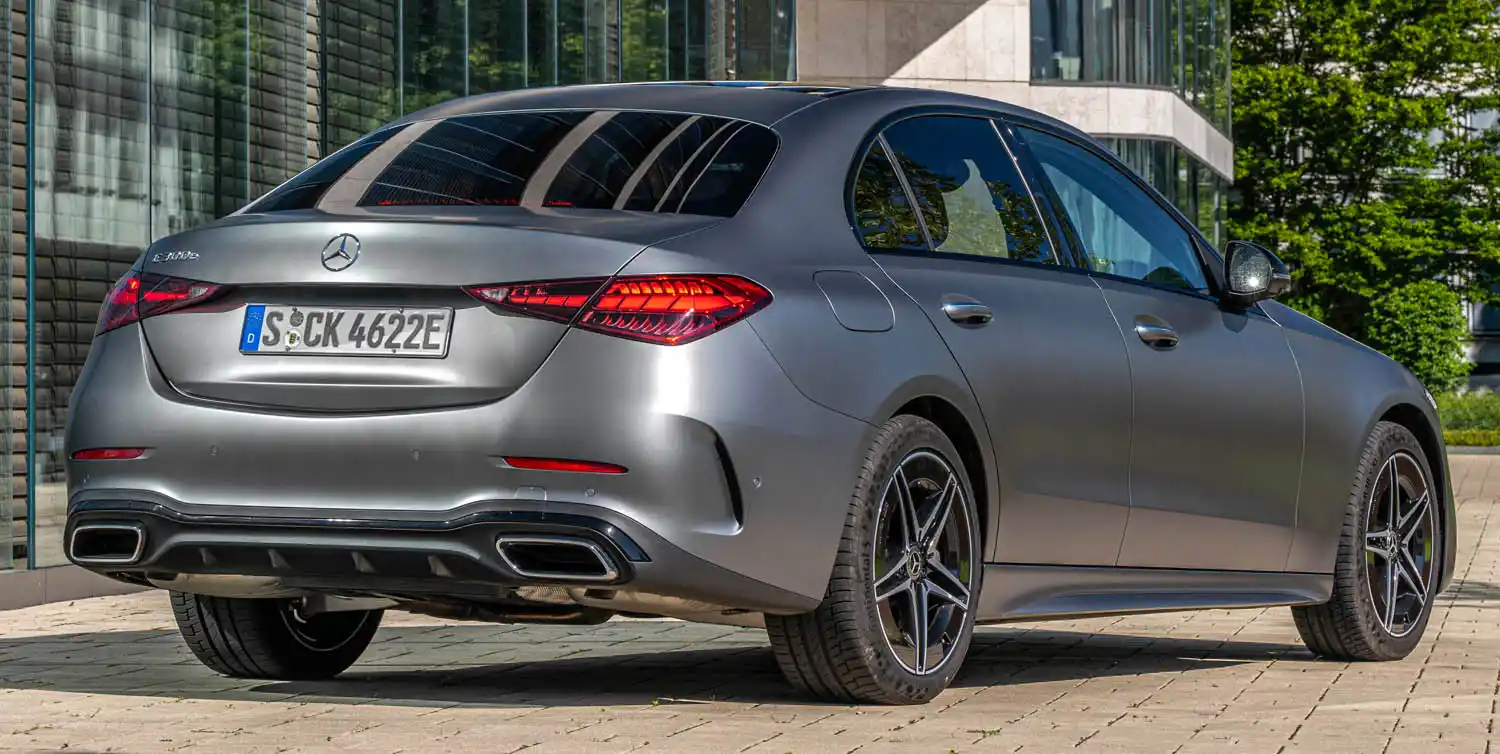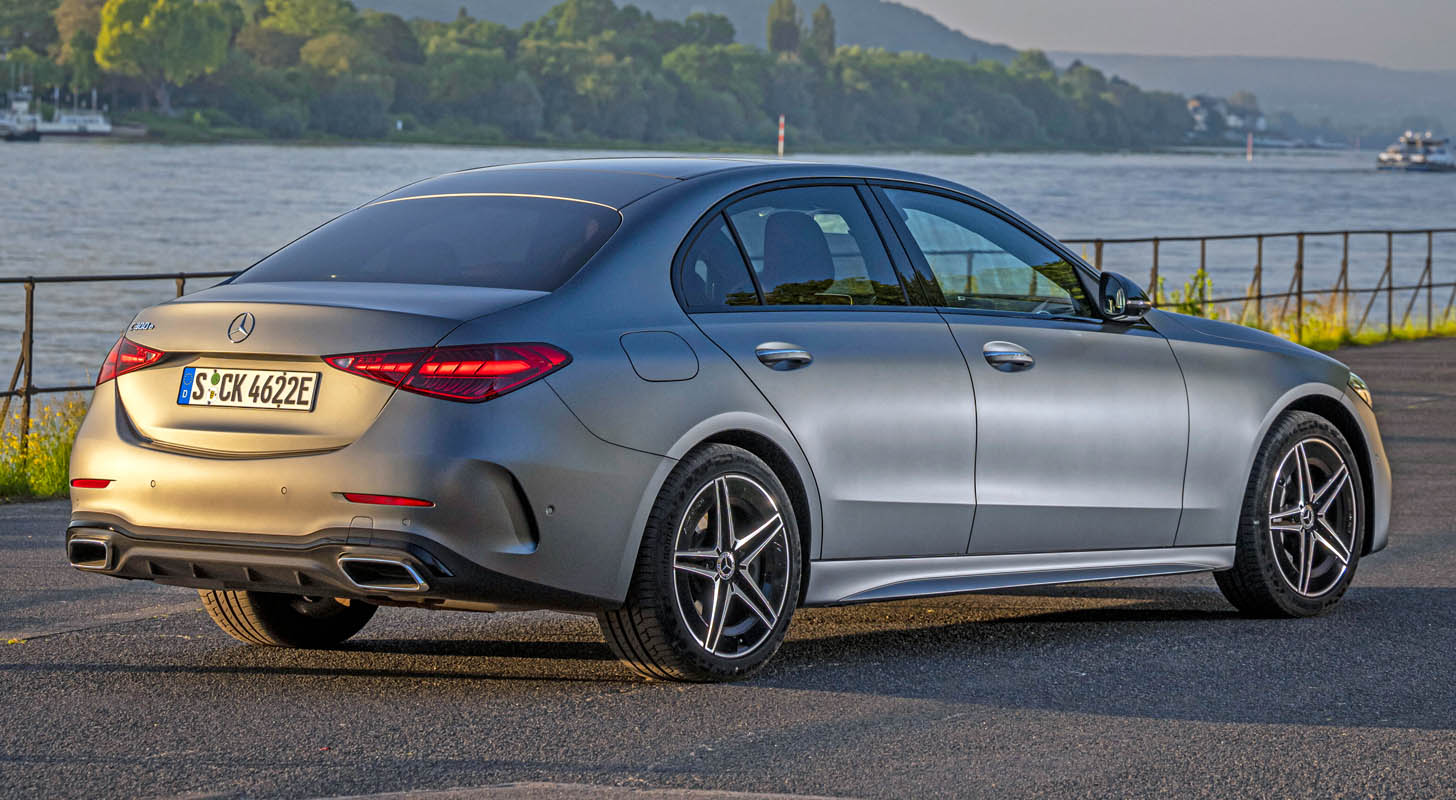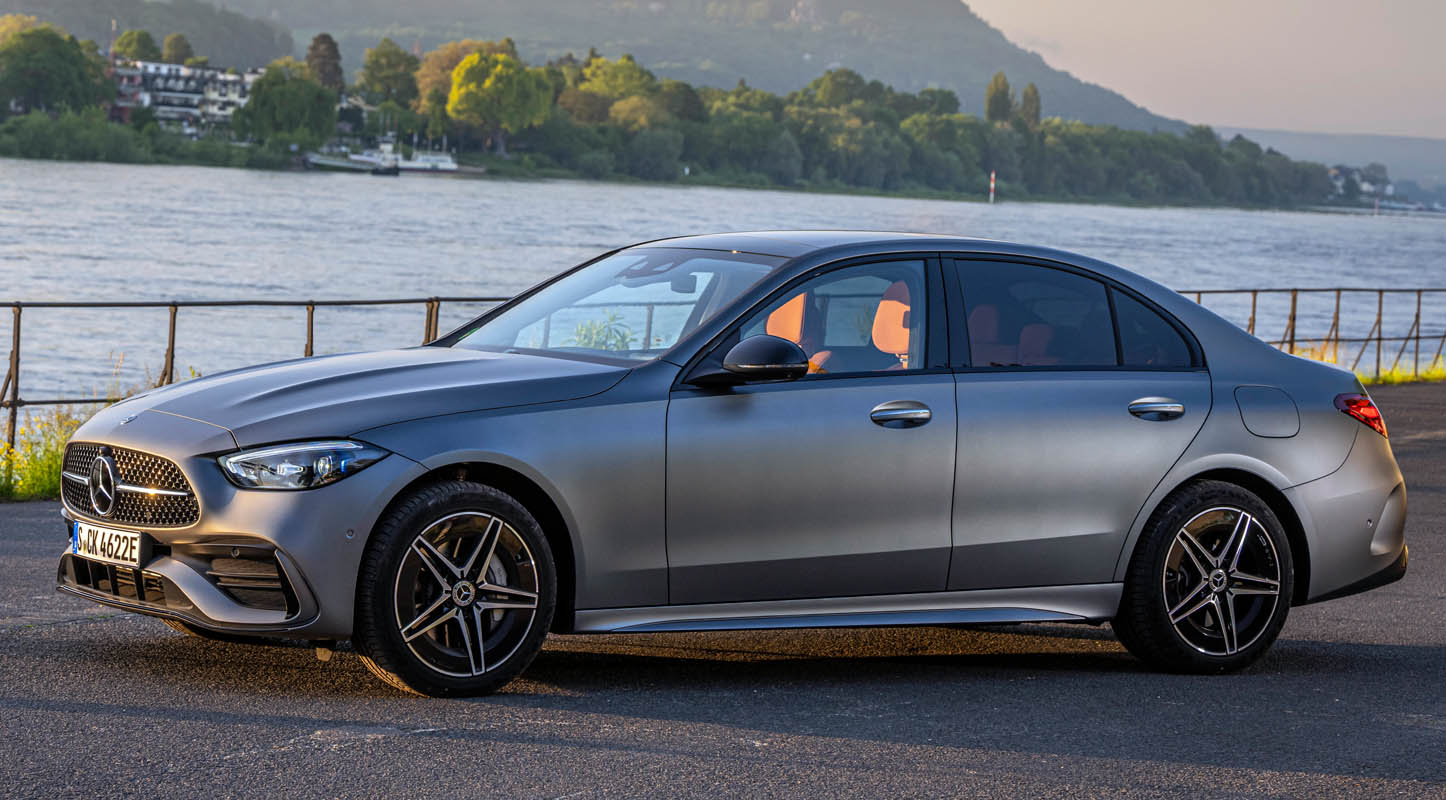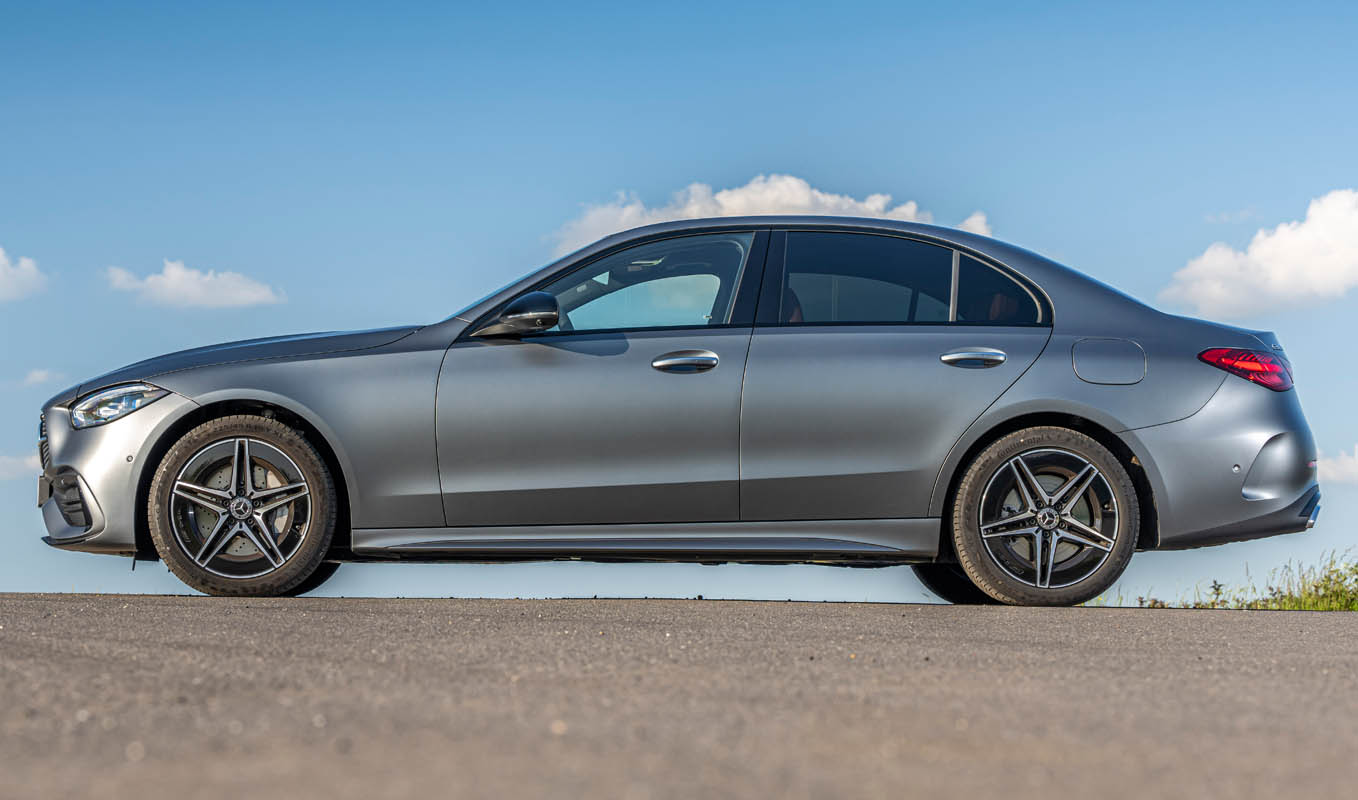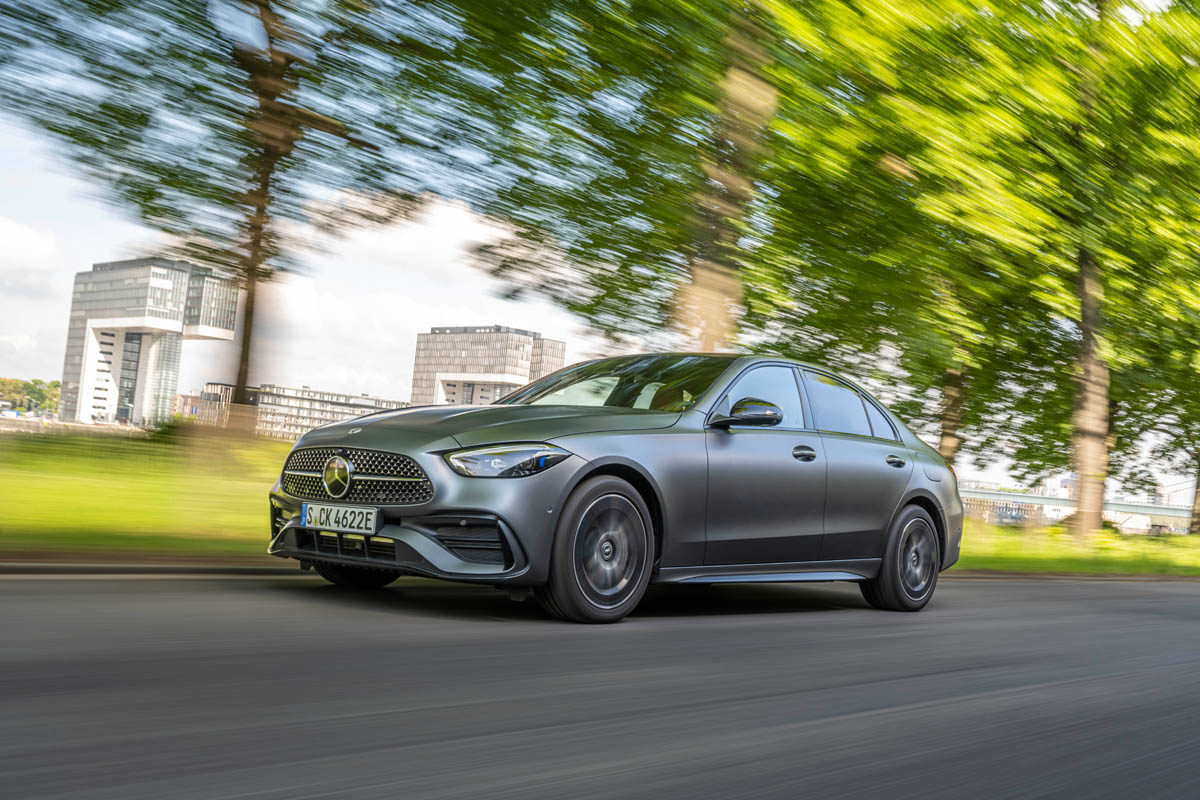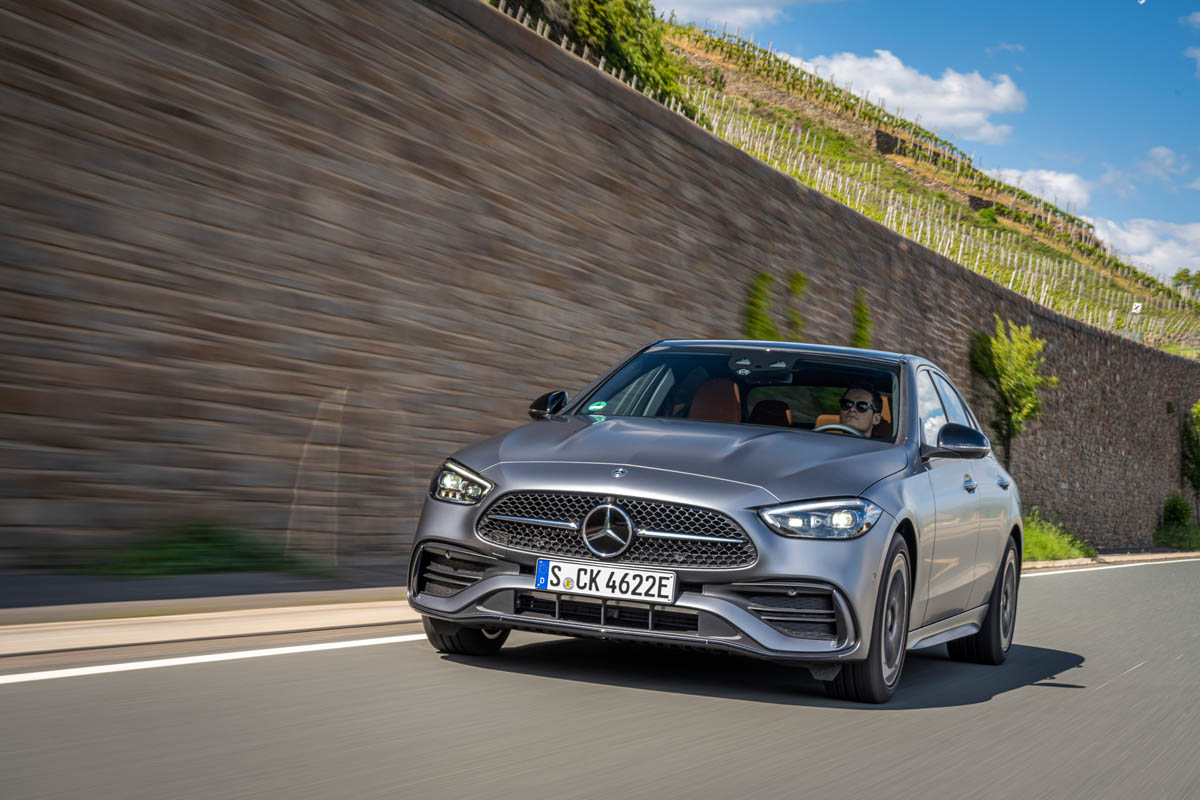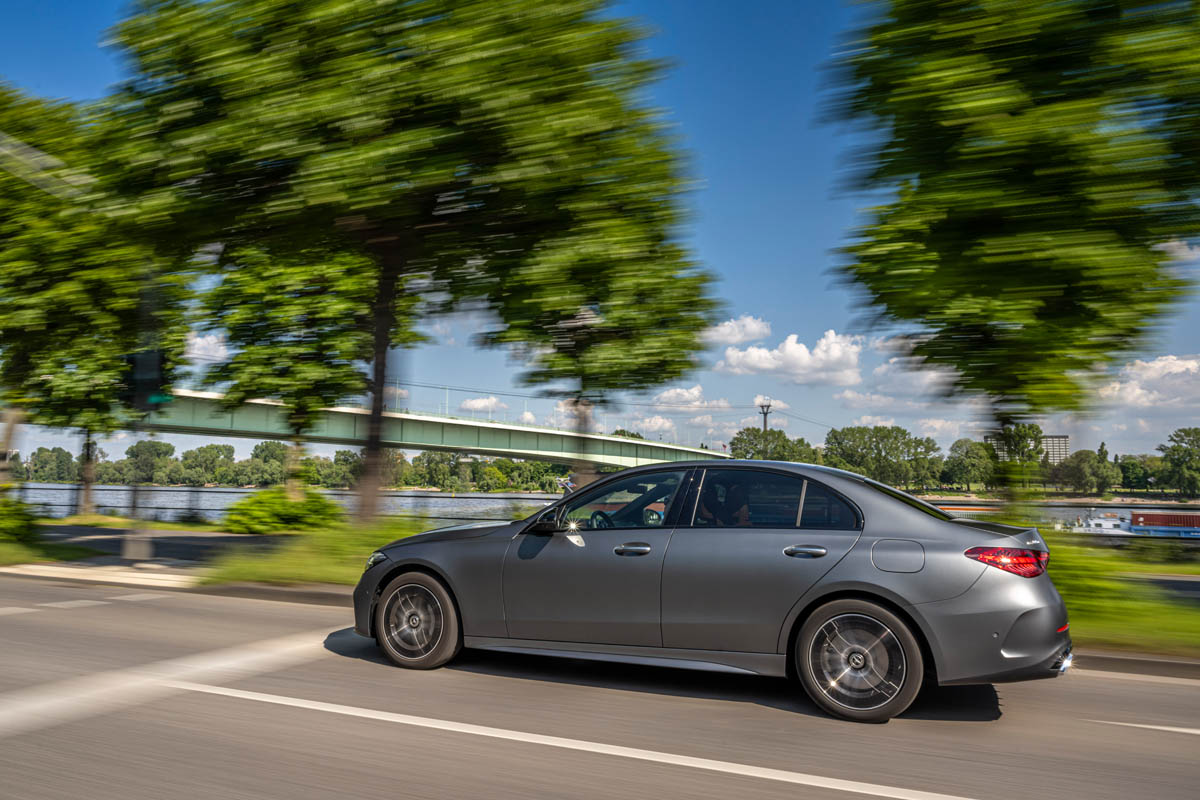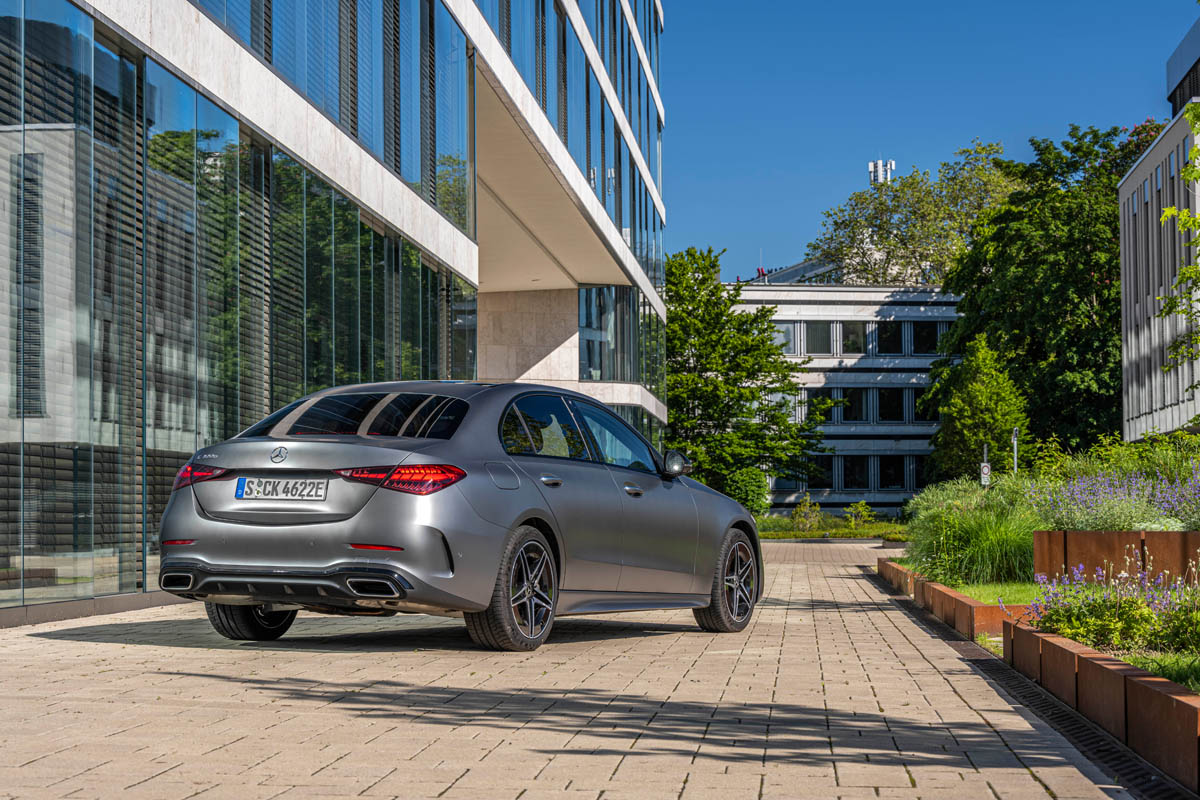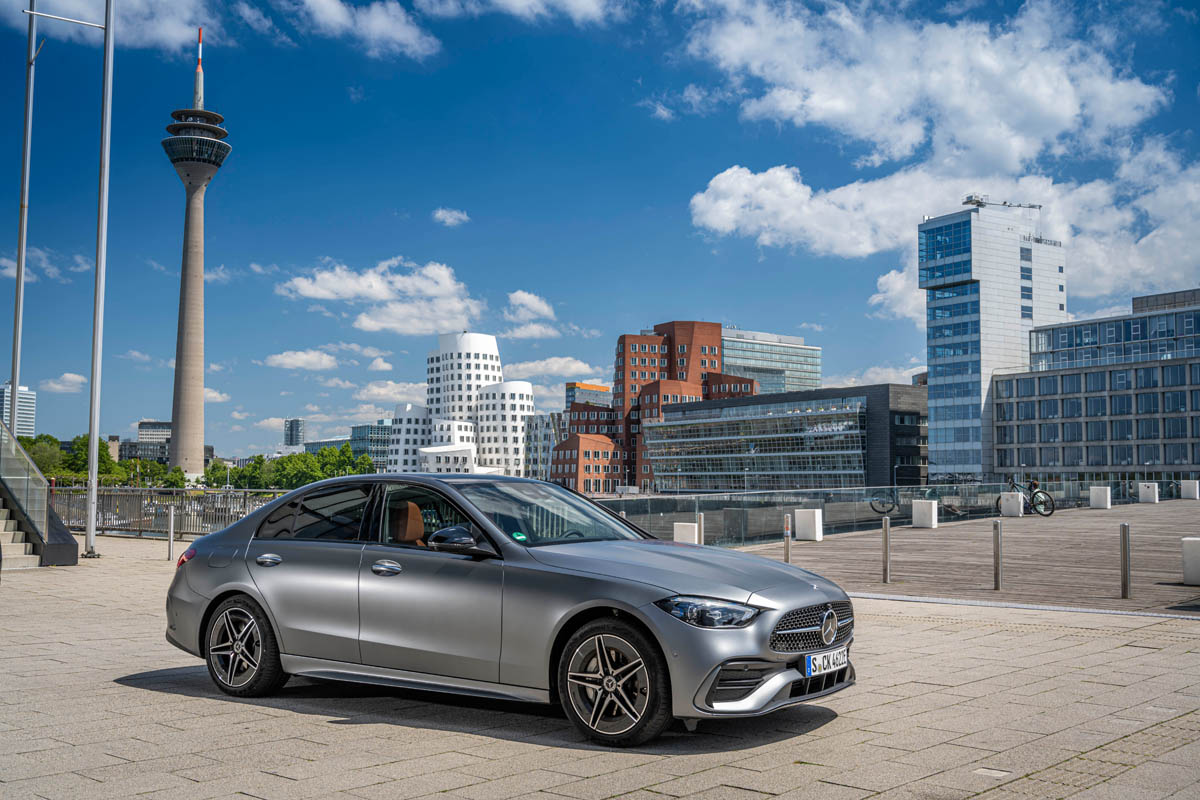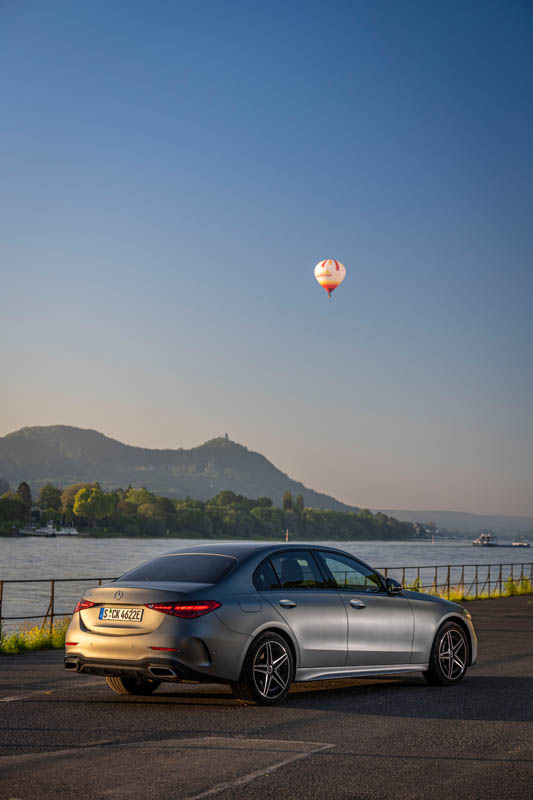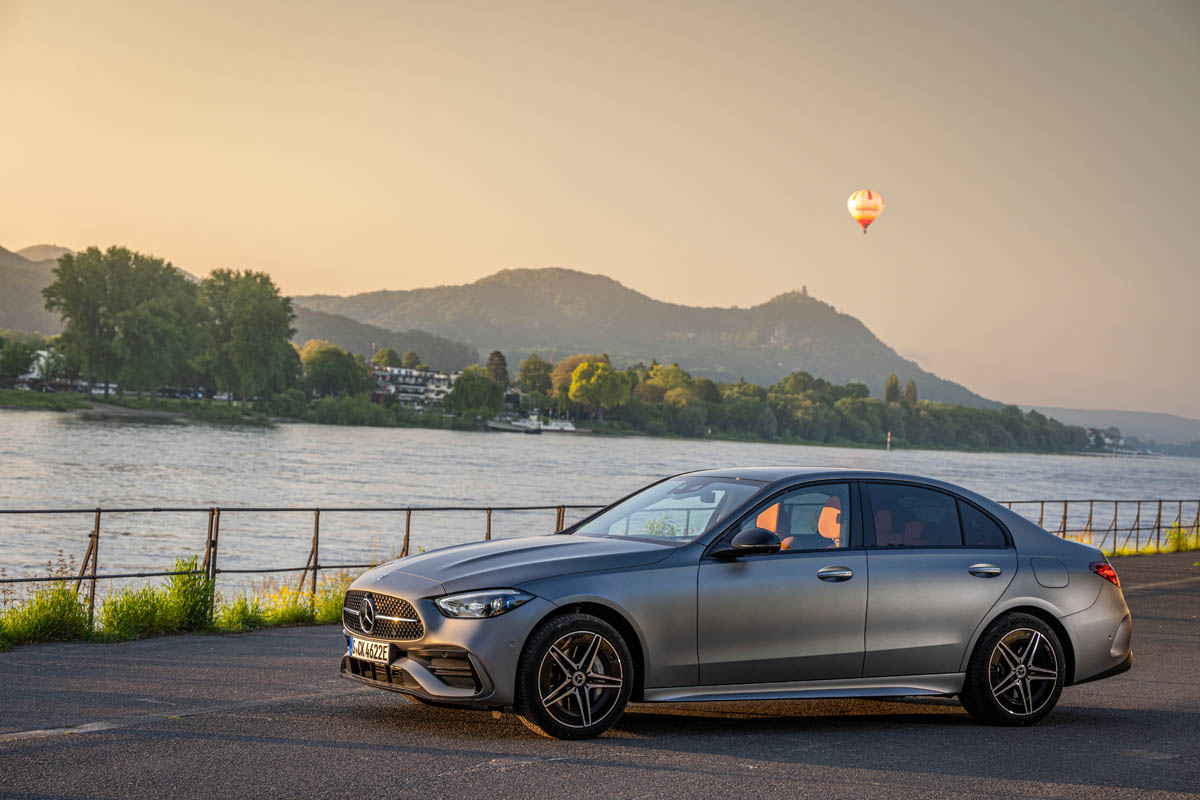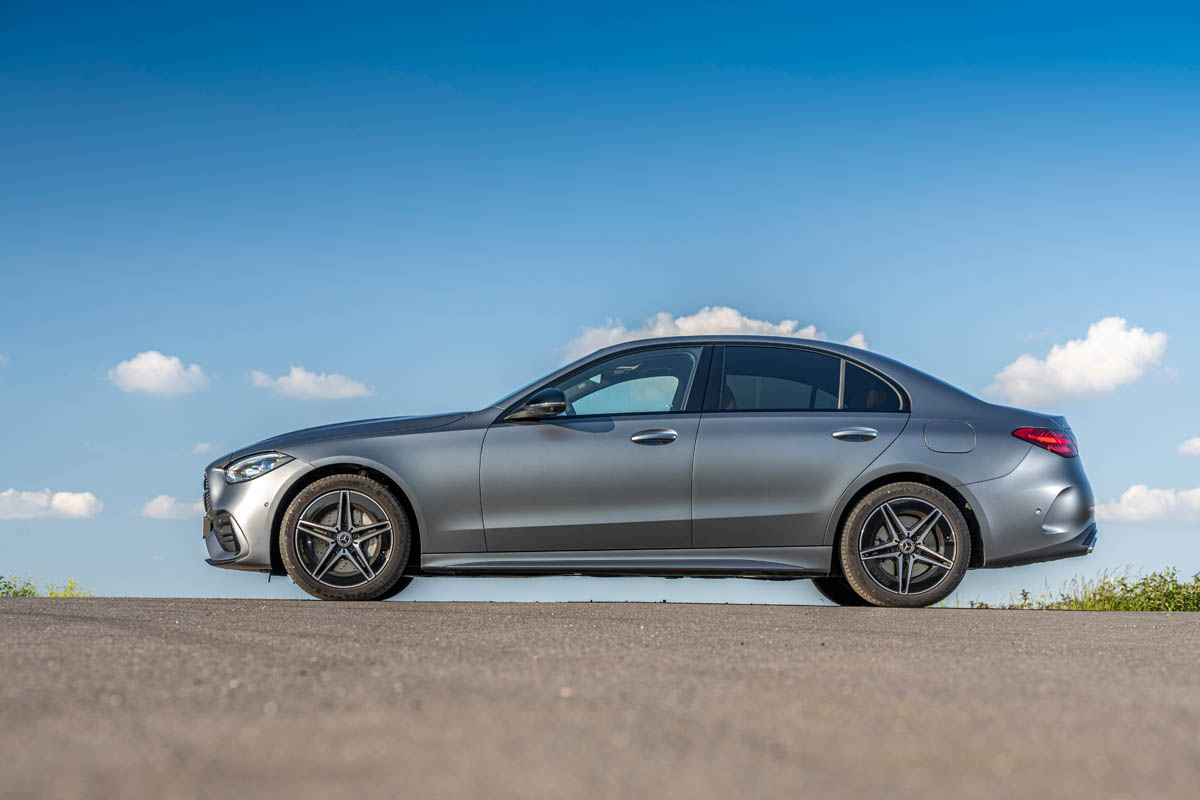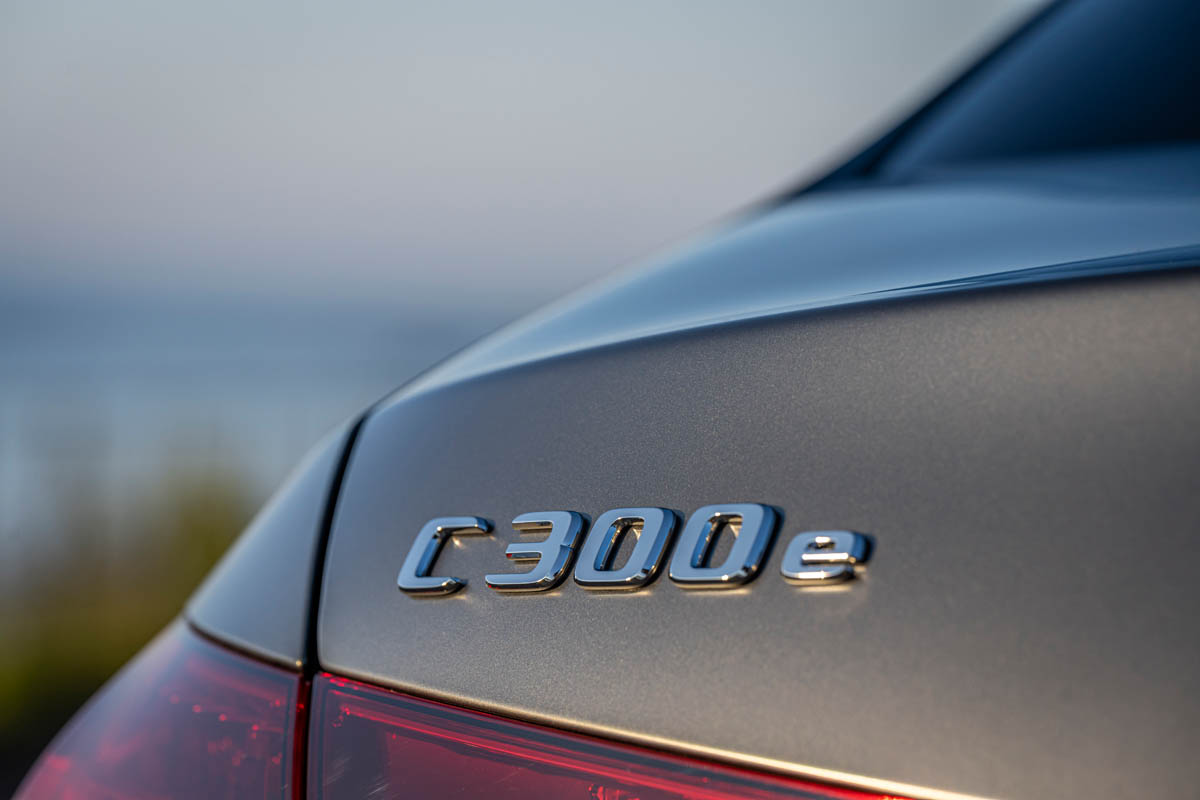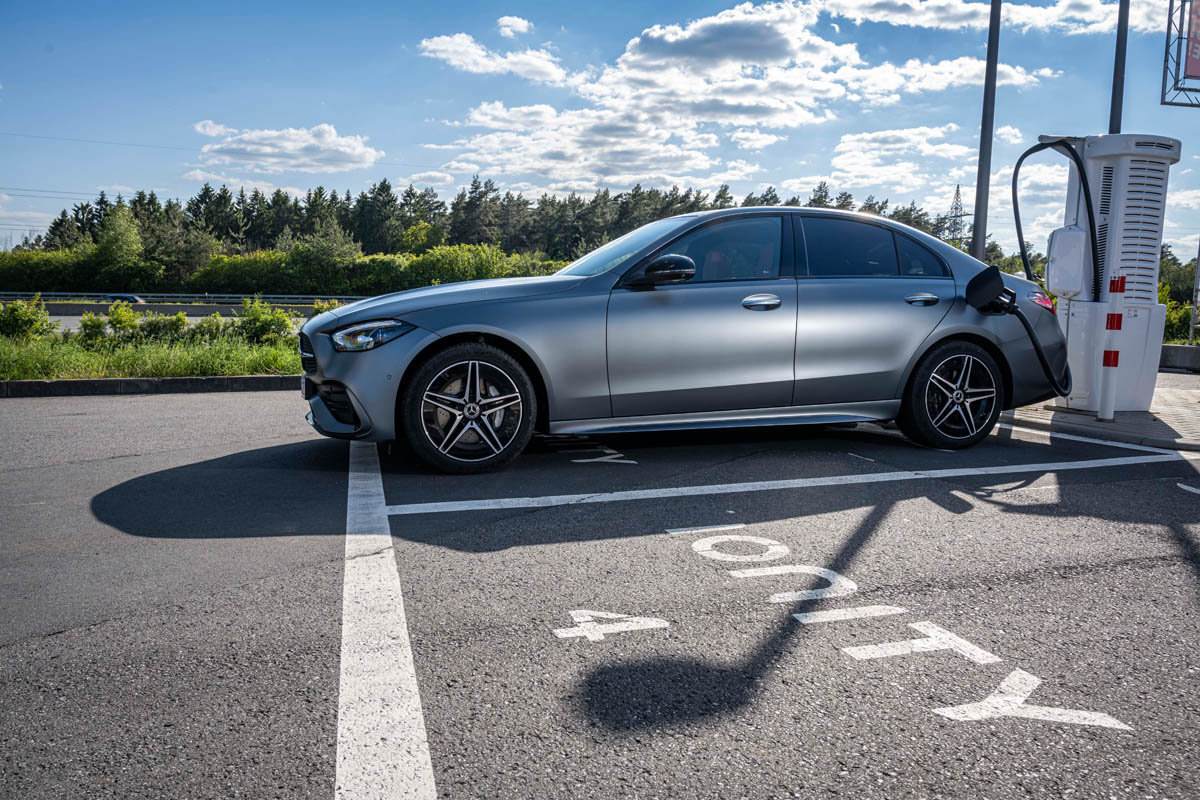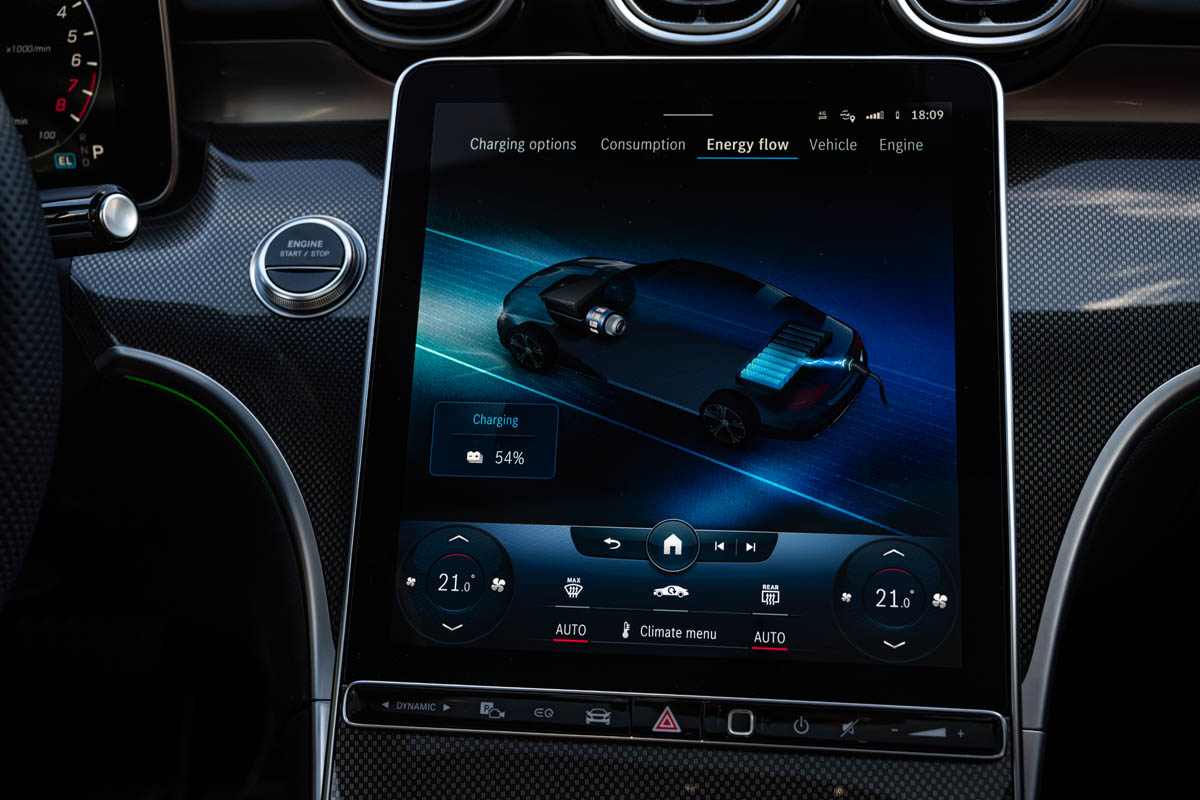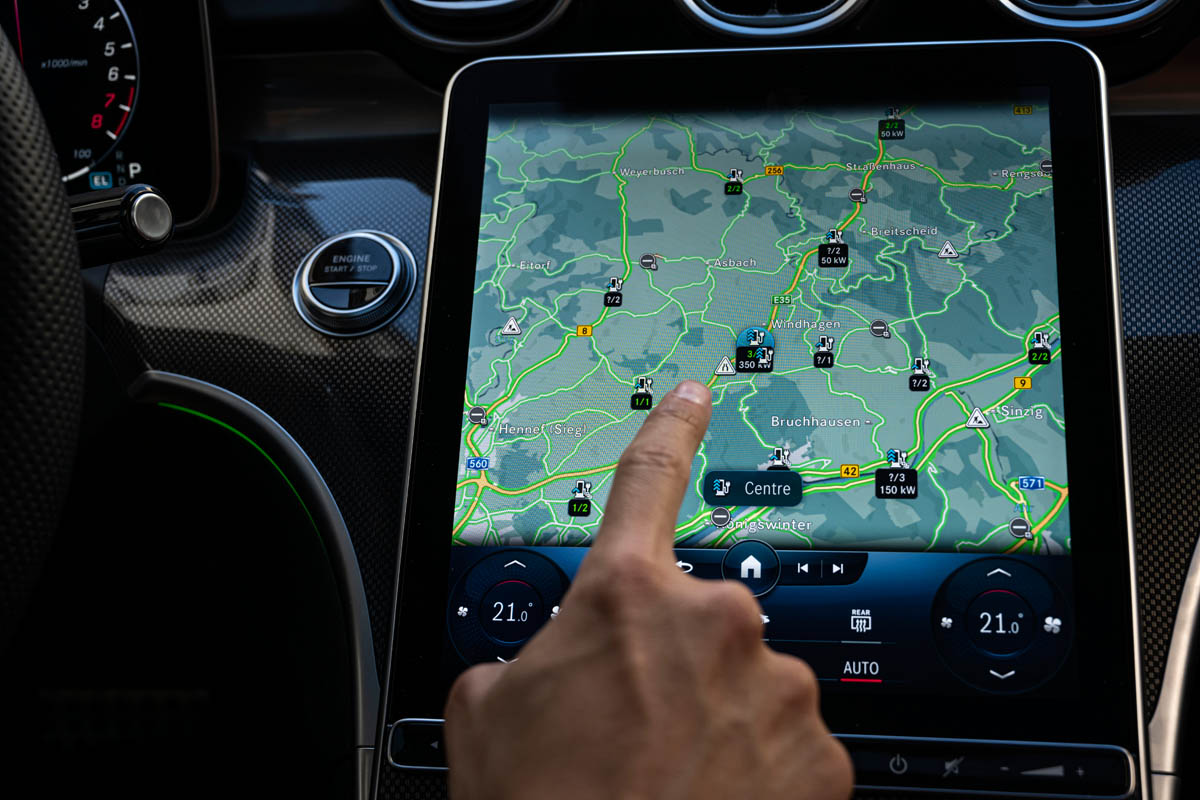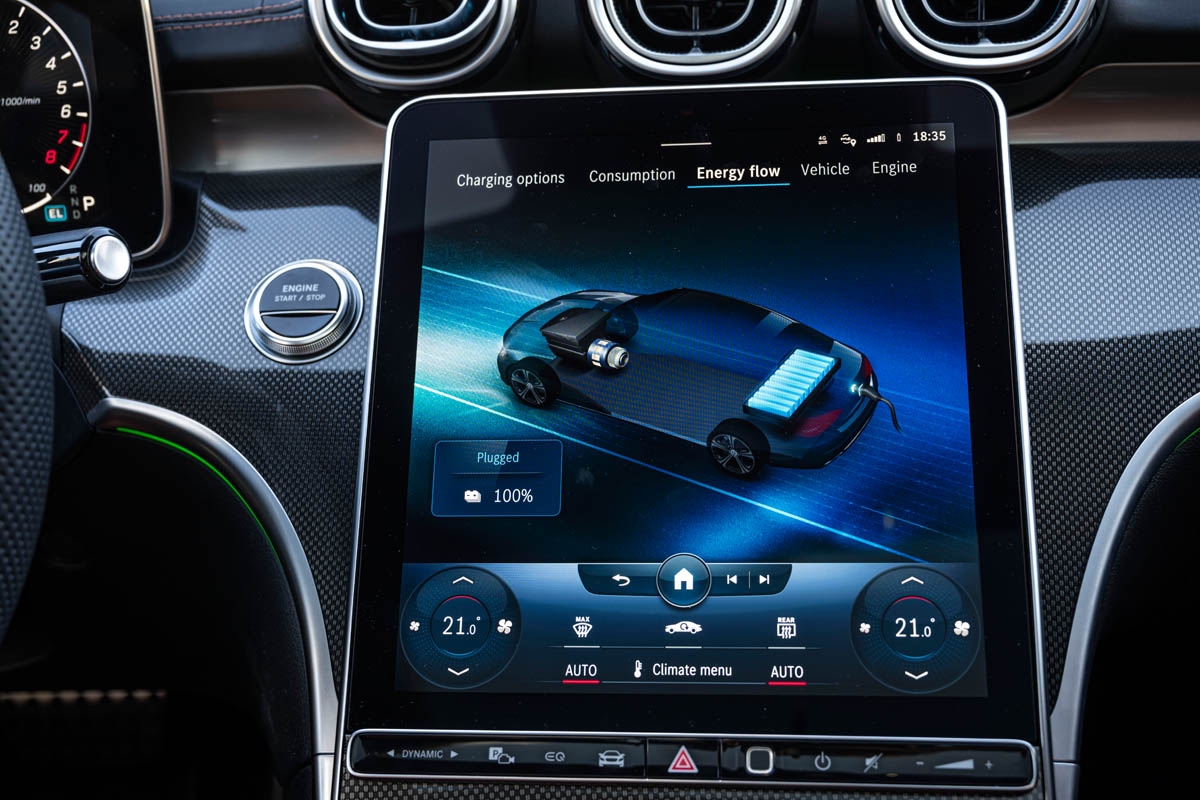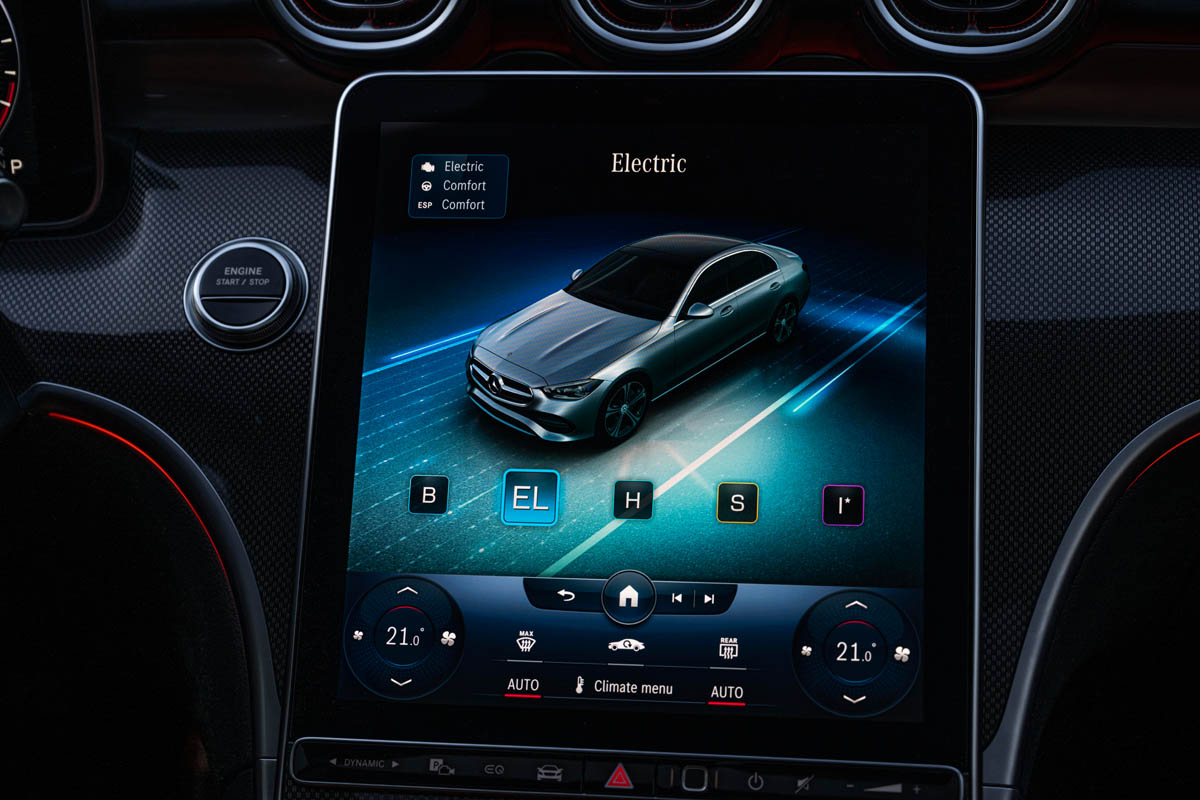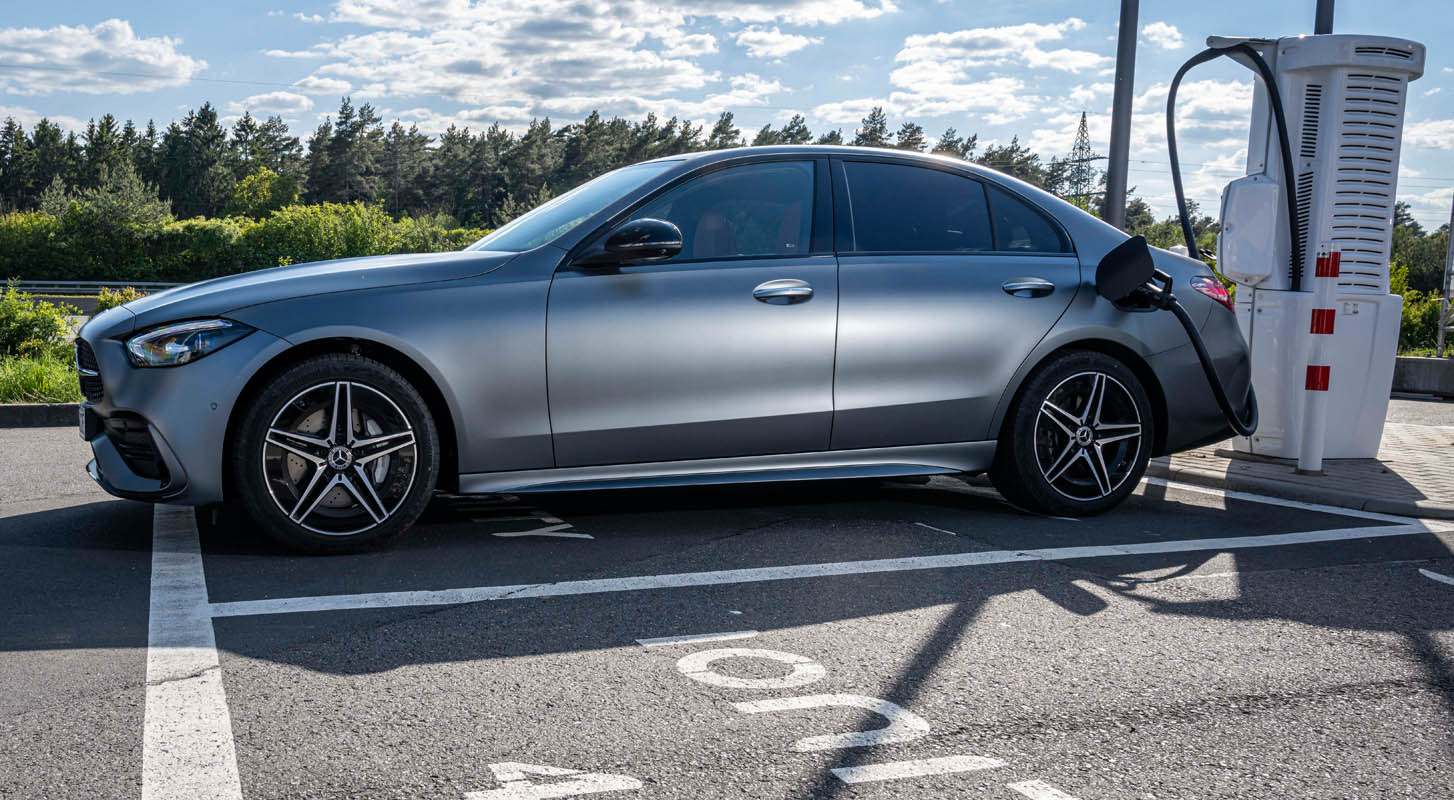
Following the recent launch of the new C-Class generation it is now possible to order the C 300 e and the C 300 e Estate as the first plug-in hybrid models. The market launch of the Saloon is taking place immediately, while the Estate will land in dealerships from December.
The level control system thanks to air suspension at the rear comes as standard in both models. Prices start at €56,168[2] (C 300 e) and €57,9532 (C 300 e Estate), respectively. An environmental bonus[3] of €5625 in Germany helps to makes both models particularly attractive. Diesel plug-in hybrid models are set to follow in due course.
Considering the electric range increased to more than 100 km and the electric output of 95 kW (129 hp), everyday routes can for the most part be covered in all-electric mode without using the combustion engine. This is the two-litre variant of the ultra-modern M 254 four-cylinder petrol engine. Thanks to recuperation, kinetic energy is recovered when decelerating or driving downhill. The energy recovery output is now over 100 kW.
The intelligent, route-based operating strategy activates the electric driving mode where this is most appropriate for the route. It takes into account such factors as navigation data, topography, speed limits and the traffic conditions for the entire planned route. A driver wishing to influence the energy recovery rate can do so directly in three stages controlled by rocker switches behind the steering wheel. This is possible in all driving modes except SPORT. In the driving mode D-, for example, the driver can experience the “one-pedal feeling”: When the driver takes his foot off the accelerator the vehicle slows down, purely by electric means, to such an extent that the hydraulic foot brake is often not needed. The operating strategy communicates with the sensors of the assistance systems and thus efficiently supports the driver in many driving situations.
The positioning of the battery in the vehicle brings advantages on a day-to-day basis compared with the previous model: there is no longer a step in the boot, and through-loading is now possible. This improvement is particularly noticeable in the Estate model: the length of the luggage compartment floor has increased by 63 mm to 1043 mm. Tall drinks crates can be loaded without issue below the cassettes for the roller cover and load compartment net. Compared with the predecessor, the luggage compartment volume has increased by 45 litres to 360 litres, and with the rear seats folded down the Estate can even accommodate 1375 litres (plus 40 l).
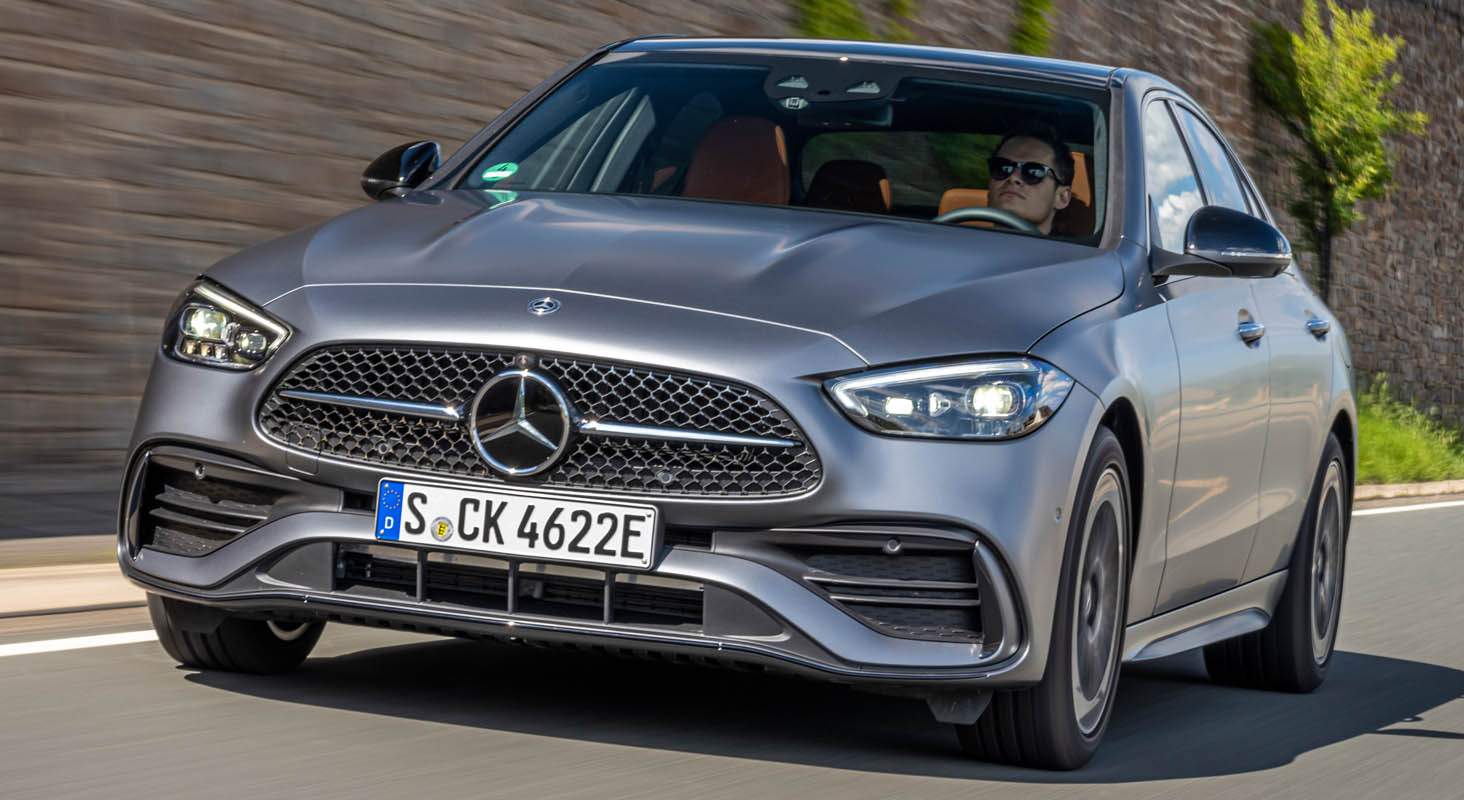
An overview of the new models:
| C 300 e Saloon | C 300 e Estate | ||
| Displacement | cc | 1999 | |
| Rated output, petrol engine | kW/hp | 150/204 | |
| at | rpm | 6100 | |
| Rated torque, petrol engine | Nm | 320 | |
| at | rpm | 2000-4000 | |
| Rated output, electric motor | kW/hp | 95/129 | |
| Rated torque, electric motor | Nm | 440 | |
| at | rpm | 2100 | |
| System output | kW/hp | 230/313 | |
| System torque | Nm | 550 | |
| Top speed | km/h | 245 | 240 |
| Top speed, electric | km/h | 140 | |
| Acceleration 0-100 km/h | s | 6.1 | 6.2 |
| Combined fuel consumption, weighted (WLTP)1 | l/100 km | 0.8-0.6 | 0.8-0.6 |
| Combined CO2 emissions, weighted (WLTP)1 | g/km | 17-13 | 19-14 |
| Combined power consumption, weighted (WLTP)1 | kWh/100 km | 23.3-20.8 | 24.1-21.6 |
| Electric range (EAER comb.) (WLTP)1 | km | 99-111 | 95-107 |
| Price from2 | euros | 56,168 | 57,953 |
[1] The stated figures are the measured “WLTP CO2 figures” in accordance with Article 2 No. 3 Implementing Regulation (EU) 2017/1153. The fuel consumption figures were calculated based on these figures.
[2] Recommended retail price in Germany including 19% VAT
[3] The environmental bonus is designed to promote the purchase and registration of new all-electric vehicles and plug-in hybrids. The subsidy for new vehicles appearing on the list of eligible models is essentially shared 50:50 between automotive manufacturers and the federal government. For a limited period until 31 December 2021, an innovation premium will apply that doubles the government’s share of the environmental bonus for vehicles registered since 3 June 2020. In the case of new plug-in hybrid models with a net list price above €40,000 and below €65,000, the environmental bonus in the form of an innovation premium amounts to €5625 (federal government share: €3750, manufacturer share: €1875). The manufacturer’s share of the environmental bonus will be automatically deducted from the net list price. The level of payment and eligibility to claim the innovation premium and/or environmental bonus are regulated by the guidelines found on the website of the Federal Office for Economic Affairs and Export Control (www.bafa.de/umweltbonus). Payment of the innovation premium or of the environmental bonus does not constitute a legal right. Receiving the government share of the subsidy is subject to approval of the application by the Federal Office for Economic Affairs and Export Control (BAFA). The environmental bonus will end once the available funds are exhausted, but at the latest by 31 December 2025.
